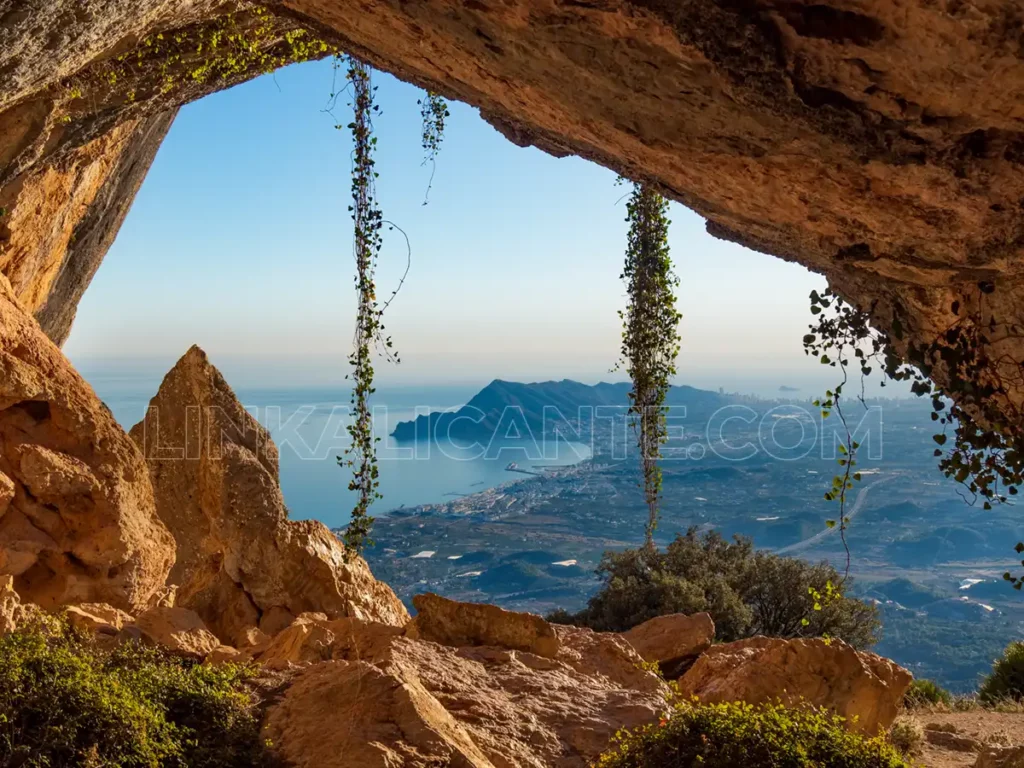
The route of the Forat de Bèrnia or circular route of the Serra de Bèrnia is a route of moderate difficulty and spectacular route that is among the essential excursions of Alicante.
Do not miss this article to learn all the details of this magnificent route and enjoy the tour to the fullest. Let’s start!
Índice del Artículo
ToggleRoute Summary
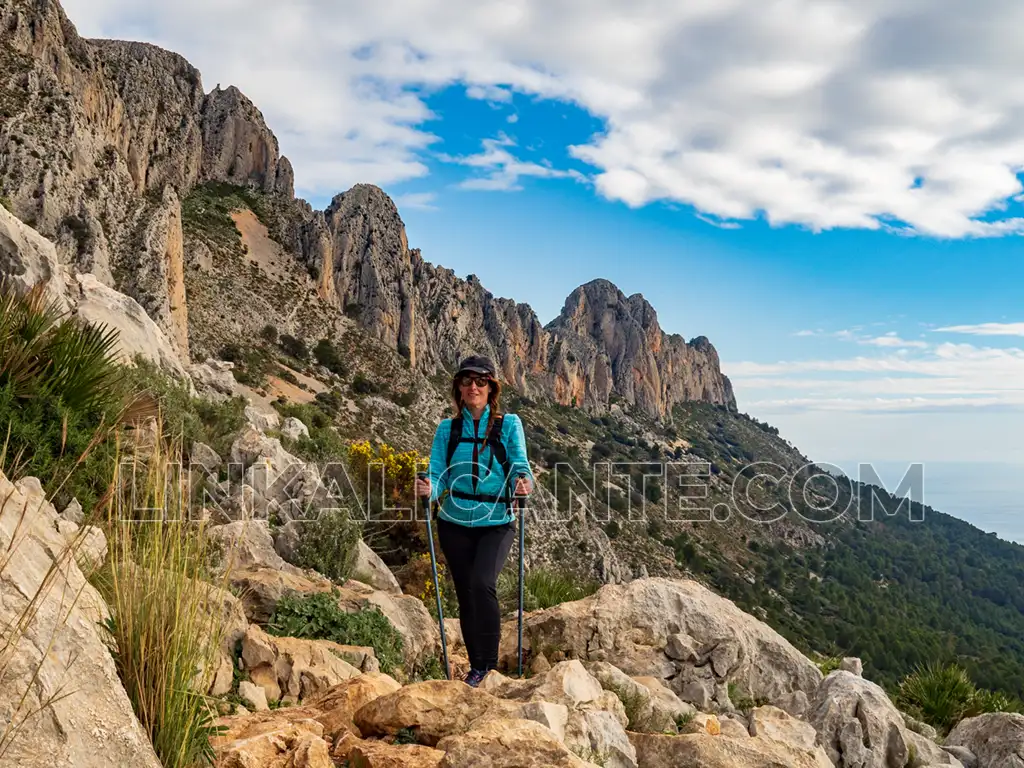
The route begins in Cases de Bèrnia, a tiny hamlet of Xaló. Nearby there are a couple of restaurants and at the beginning of the route there is parking space (it usually fills up) and the information panel of the route.
The first part is on a wide path with no slope, up to the Font de Bèrnia, a beautiful fountain in an idyllic spot.
From the fountain begins the moderate climb to El Forat, passing through some areas of easy climbs.
If you decide to do the circular route, from the Forat you head towards the Fort of Bèrnia, a Renaissance military fort. This section is on the south side, with ascents and descents and more exposed to the sun, so it can be very hot. It is also quite rocky.
To finish, from the fort you climb slightly up to the Coll de Xaló and from there you return downhill to Cases de Bèrnia.
Short option: Round trip to the Forat
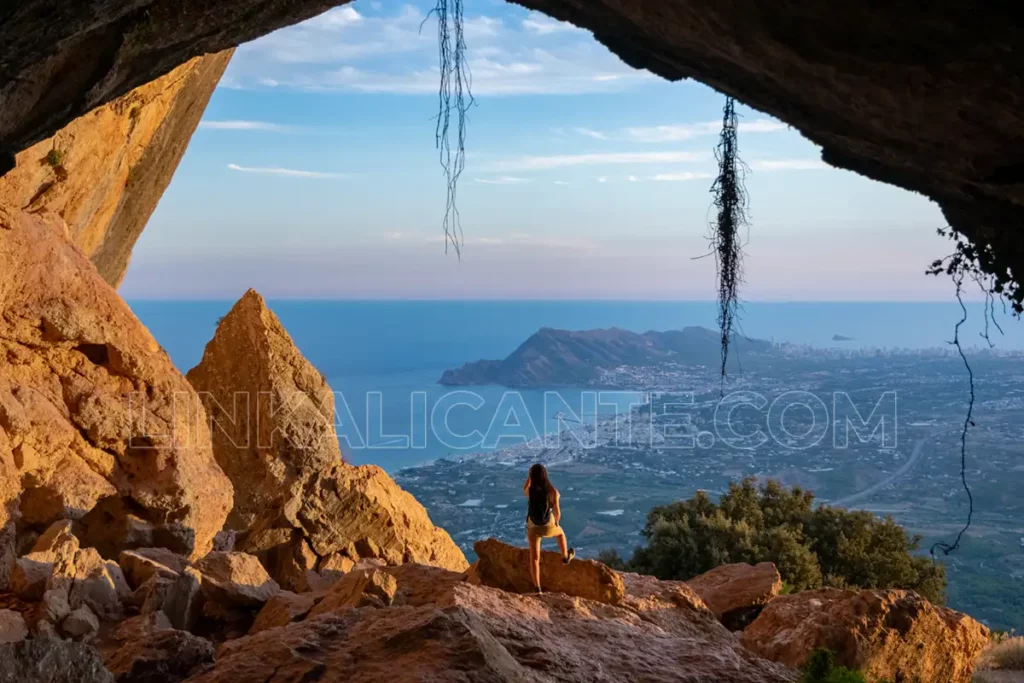
If you have little time or you are not very fit, you have the possibility of doing the round trip to the Forat from Cases de Bèrnia. In this case the route would be about 5 km and 250 meters of positive slope. You will also have to overcome some steps with the help of your hands before reaching El Forat.
Here is the article dedicated to this route to and from the Forat:
If you have time, I recommend you to do the complete circular, as it passes through other points of interest such as the Fort of Bèrnia or the cave paintings of the Penya de la Ermita del Vicari. Read on for details of the complete circular route:
CIRCULAR ROUTE Bèrnia
- Difficulty: Medium. Uneven and rocky terrain. Little climbs.
- Circle Route
- Distance: 9km
- Slope: +400 m. approx.
- Time: 4-5 hours
- Marked trails: PR-CV 7
Circular Bèrnia - GPS Track
Although the hiking route around the Serra de Bèrnia is marked (trail PR-CV 7), I leave below the GPS track for wikiloc in case you find it useful.
Route Summary
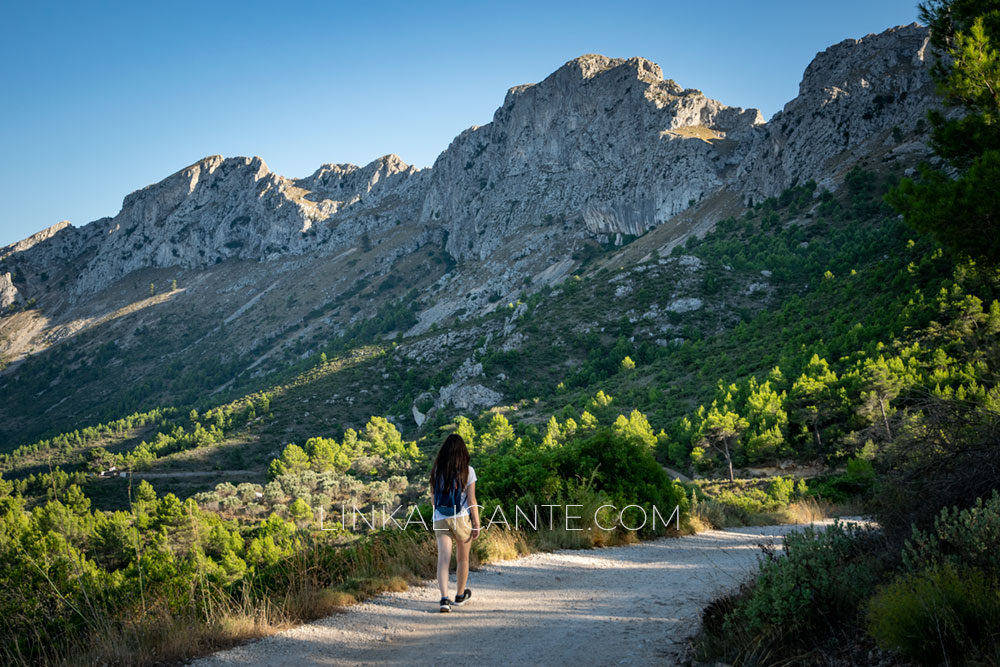
Known as the mountain range of the bandits, Bèrnia is the natural border between the regions of Marina Baixa and Marina Alta. The spectacular hiking route around the Serra de Bèrnia, also known as the Ruta del Forat de Bèrnia, is undoubtedly one of the most beautiful, interesting and with the best views of the geography of Alicante.
Amazing landscapes await us, with a great variety of environments, as well as multiple attractions in this circular route, both natural and patrimonial: El Forat, a natural tunnel through which we will cross the mountain range; El Fort de Bèrnia, a jewel of our cultural heritage dating from the 16th century, as well as the impressive panoramic views towards the neighboring mountain ranges and the nearby Mediterranean. All these factors, together with a medium level of difficulty, mean that we can consider this excursion as one of the essential ones in our province.
We start from Casas de Bèrnia , a small district belonging to the town of Xaló . From there, through the north face of the mountain range, we will go up to the Forat , a natural tunnel that crosses the mountain, and which opens up like a fantastic viewpoint towards the bay of Altea , already on the southern slope of the mountain range.
At the foot of the impressive calcareous ridge, we will walk along the southern face of the mountain range until we reach Fort de Bèrnia (Fort of Bernia), a 16th-century military construction, a true jewel of our heritage. From the fortress, we will cross the Coll de Xaló to return to the farmhouse where we start (and end) this fantastic excursion.
The route is very rocky between Fort de Bèrnia and El Forat (south side of the mountain range), so I recommend mountain shoes.
The hiking route around the Serra de Bèrnia is one of the most interesting and complete routes in the province of Alicante.
The Sierra de Bernia
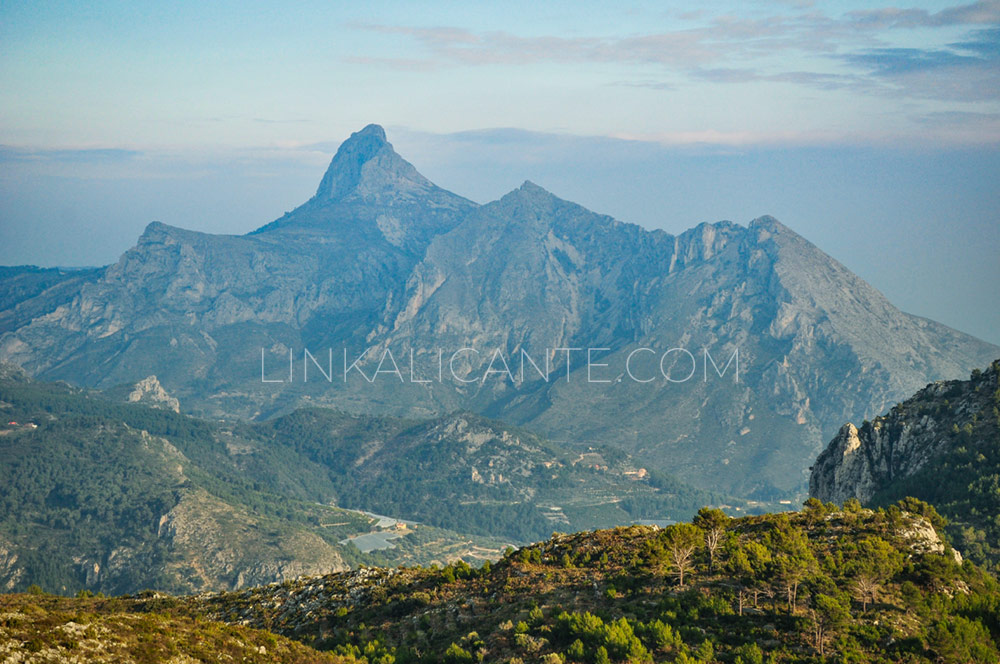
With a length of about 10 kilometres, from les Fonts d’Algar to the Strait of Mascarat , the Serra de Bèrnia stands imposingly perpendicular to the nearby Mediterranean. It is an elongated elevation, culminated by a magnificent and stylized ridge, which makes it the most spectacular relief in the province of Alicante -with the permission of the Serra del Benicadell-.
The mountain range is part of the Protected Landscape of the Sierras de Bèrnia and Ferrer , a protection figure granted by the Generalitat Valenciana in 2006. In the shaded area of Bèrnia we also find 4 flora micro-reserves .
Bèrnia, the mountain range of bandits
During the 19th century, the presence of bandits in the Marina Alta was common, who dedicated themselves to assaulting transport and frightening the population. In the Sierra de Bèrnia there are several toponyms that leave evidence of that time. In the ravine or pass of Mascarat -a natural barrier that was a blockade for communications for many years-, the presence of one of these bandits was common, which eventually ended up giving name to the gorge. Another reference is found in what is called Passet dels Bandolers , at the western end of the mountain range.
Frequent questions
Description of the Route and Photographs
Our advice when it comes to enjoying this magnificent route is to start at Casas de Bèrnia in the direction of the Forat, whether you are going to do the circular route or just go round trip to the emblematic natural tunnel that crosses the ridge of the mountain range from north to south. This way you will enjoy the “wow effect” when you enter this spectacular cave-viewpoint.
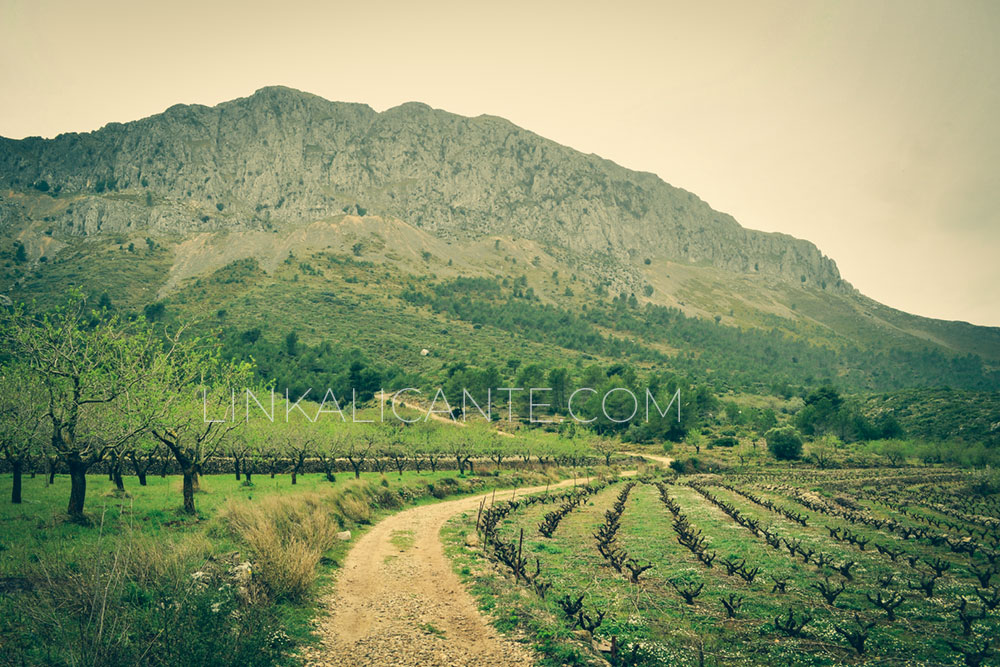
Cases de Bèrnia, starting point
From Benissa, we take the winding road that leads us to the hamlet of Pinos , and which we then continue towards Cases de Bèrnia , the starting point of the route. Cases de Bèrnia (Houses of Bèrnia) is a small rural hamlet located at the foot of the Bèrnia summit, on the north face of the mountain range, within the municipality of Xaló . In the vicinity we find several restaurants.
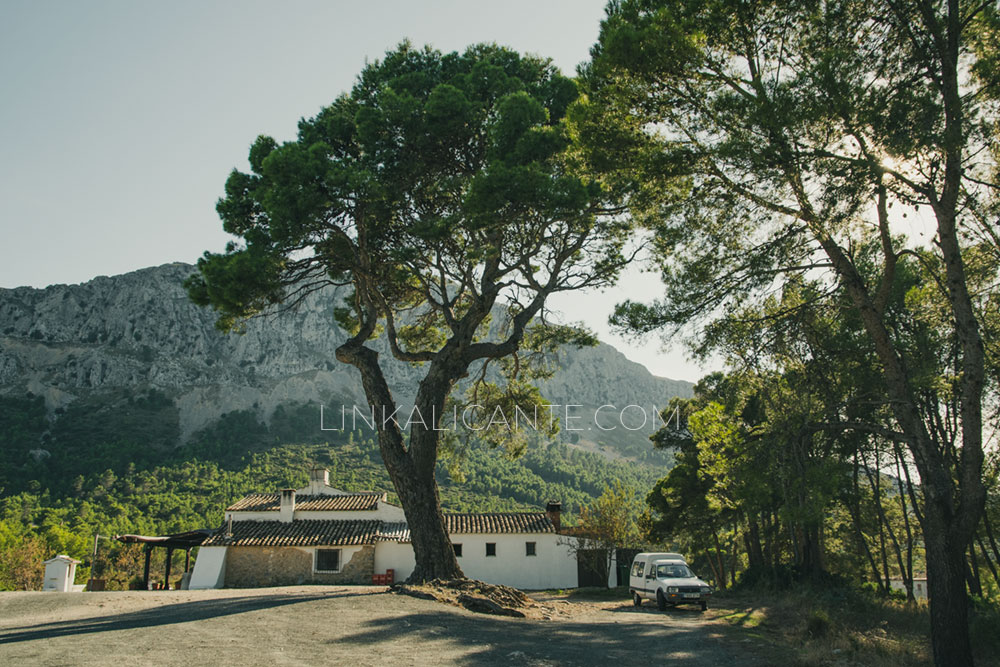
The Fountain of Bernia
Next to the Casas de Bèrnia we find a parking area and a panel with a map of the route. We are going to follow the PR-CV 7 trail to the left, in the direction of El Forat .
In this first part of the route, a comfortable dirt road gradually brings us closer to the great walls of the mountain range, until we reach the Font de Bèrnia , where a trickle of water gushes out.
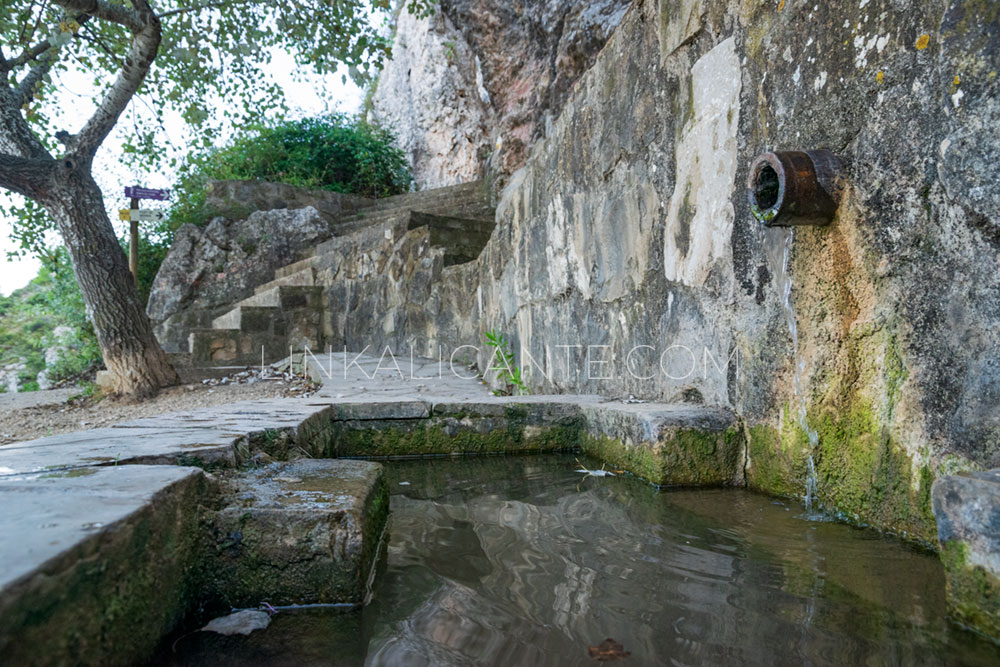
From here, after climbing a few steps, begins the path that in approximately 1.5 kilometers ascends to El Forat: a natural tunnel of karst formation -dissolution of the limestone rock by the effect of water-, about 15 meters long, which allows us to cross from one side of the mountain to the other.
This first part of the route is perhaps the most complicated, since before reaching El Forat , we will have to overcome two areas with small climbs, always sheltered by the impressive vertical walls of the Bèrnia ridge (bottom photo).
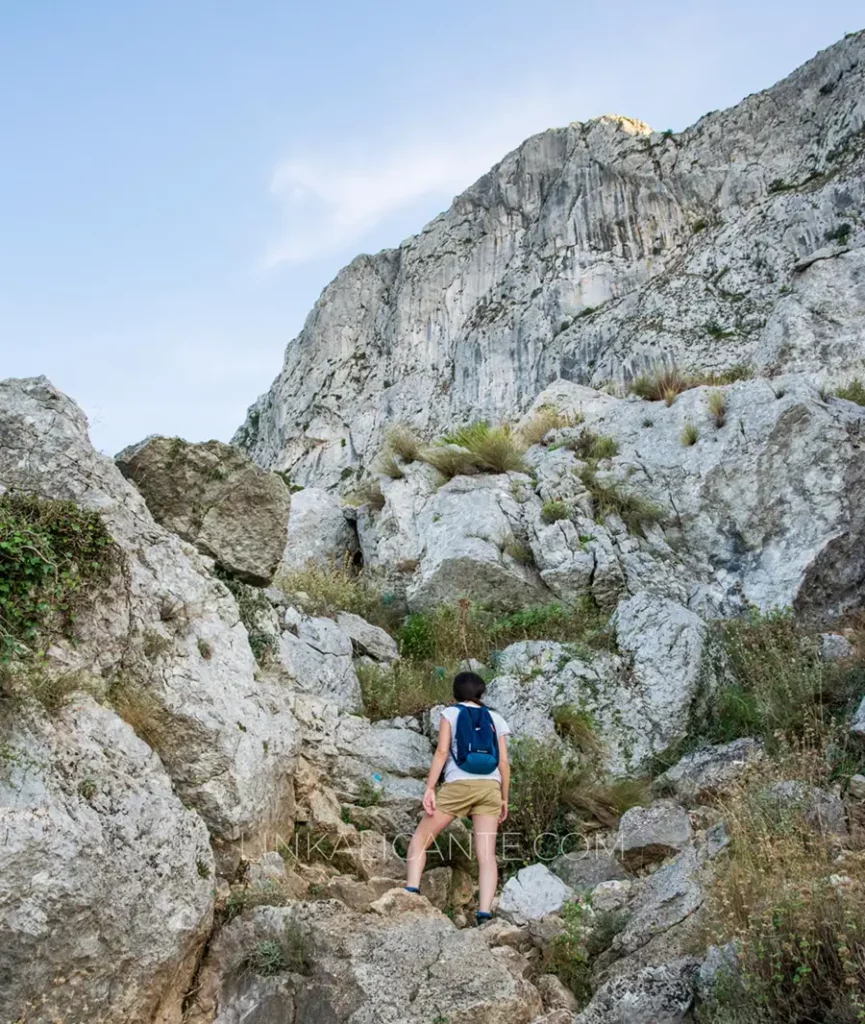
In the second of these steep areas, just before the Forat, you have to take the path to the right, avoiding a “shortcut” that has formed on the left, with a more complicated climb. At this point we pass by a small natural cave that was used years ago as a shelter for cattle.
Crossing “El Forat”, a natural tunnel
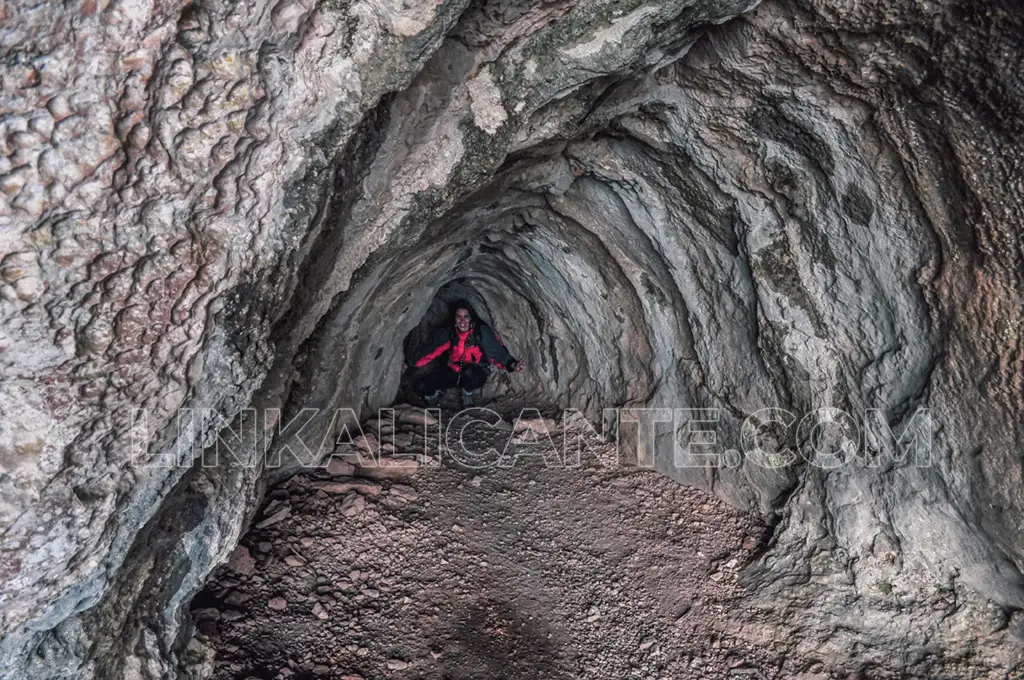
Once in the Forat , it’s time to take off your backpack and bend down. The tunnel is about 15 meters long, being narrower on its north face. It is very easy to cross, with the help of the hands, and at all times we see light on the other side.
After entering the Forat through the narrow northern opening, the tunnel widens until it becomes a broad vault at its southern end. At this point, no matter how many times you have passed, the views towards the Bay of Altea never cease to amaze. The profile of the Serra Gelada stands out and, further to the right, the Puig Campana and the Sierra de Aitana.
In this case, although we could not enjoy the views, we took the opportunity to have lunch and recharge our batteries, while being protected from the fine rain.
We continue the tour along the southern slope of Bèrnia. In this section of the path, we will cross several quarries and areas with large blocks of rock, so the path becomes very rocky . As I said at the beginning, it is highly recommended to use good hiking shoes. If you also get a rainy day, as it happened to us, the rocks are especially slippery.
Little by little we are approaching the recreational area ” Font de la Barca ” (which we will not reach in this case, since it is below us) and the Casas del Runar. In the background, the view of Puig Campana, Ponoig and Penyó Cabal is striking.
After crossing several scree fields, we reach the detour towards Font del Garroferet via Camí de les Revoltes. We continue straight ahead, towards Fort de Bèrnia . Before that, a short but steep climb awaits us.
The Fort de Bèrnia, a dismantled bastion
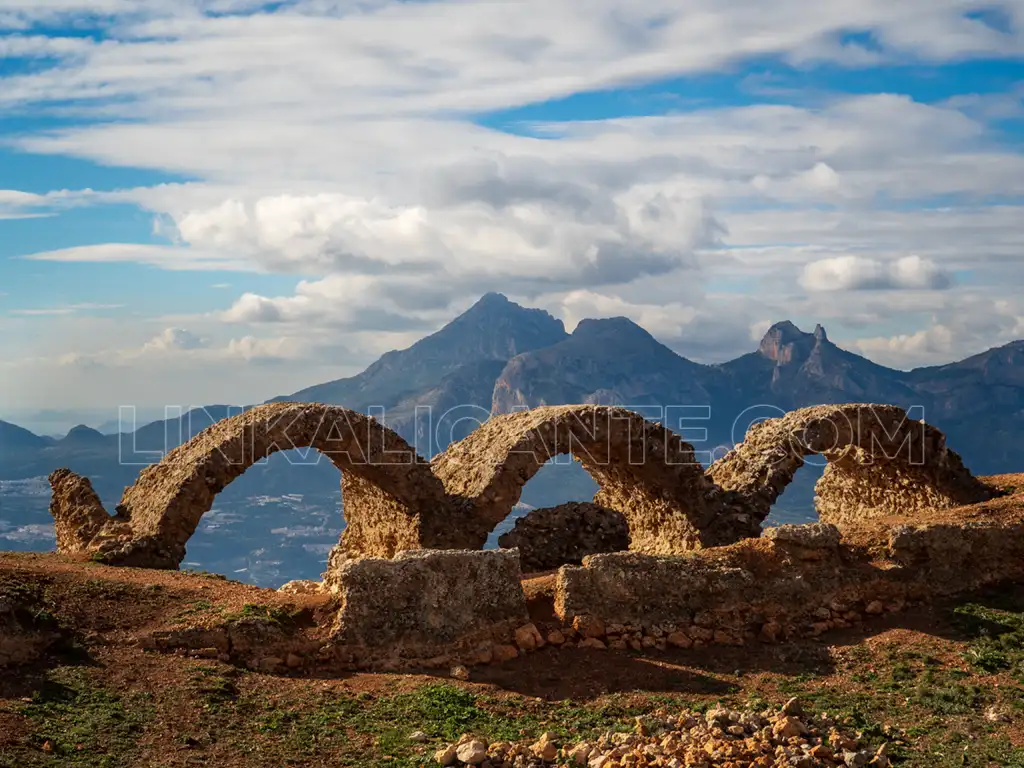
Thus, we arrive at the Fort of Bérnia (Fort of Bernia), always vigilant over the Bay of Altea. This military fortress was built in 1562 by order of Felipe II. The person in charge of directing the works was the Italian engineer Juan Bautista Antonelli ; the same one that, a few years later, would build the dam of the Pantano de Tibi .
What was the function of this fortress? On the one hand, it was intended to have a dissuasive role against the possible revolts of the Moorish population of the time. In addition, to a lesser extent, it was used as a defense against attacks by Barbary pirates, common at the time.
That is why, when the expulsion of the Moors was decreed in 1609, the Fort of Bèrnia lost its main use. Thus, in 1613, the fortress was dismantled by order of Felipe III.
Very close to the fort, we find the Font del Fort (Fountain of the Fort) , which flows a trickle of water, depending on the season’s rains.
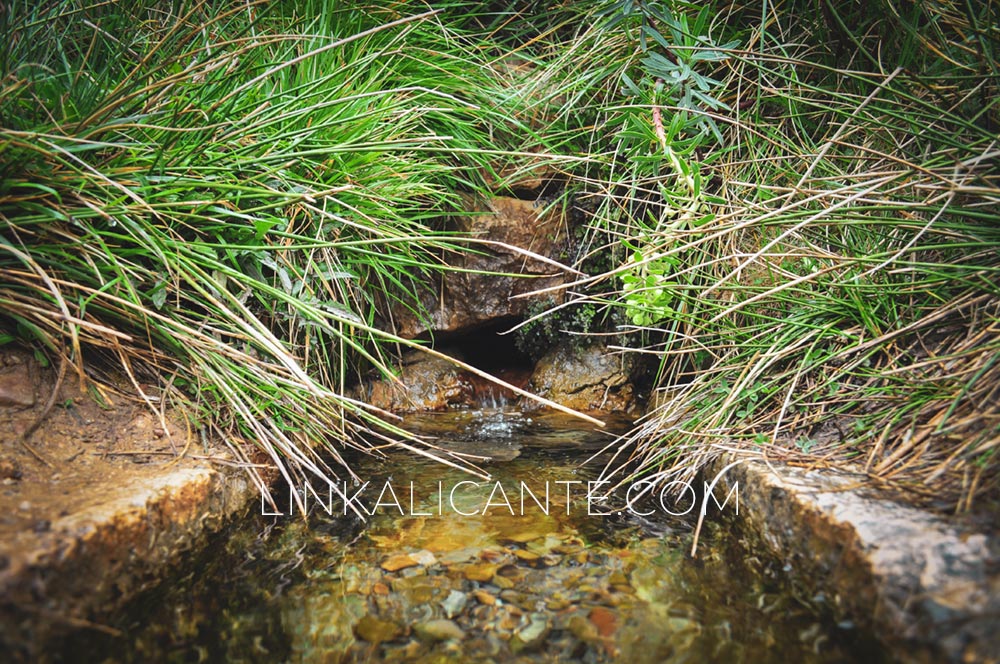
From the Fort de Bèrnia, you can start the ascent to the top, as I explain in the article ” Bèrnia from the Fonts de l’Algar (ii) “. A dizzying climb, with some steps equipped with chains.
In this case, we opted to continue the circular hiking route, so we headed to Coll de Xaló , the strategic pass that gives access, once again, to the northern slope of the mountain range (lower photo). From here, it will be all downhill until you get back to the bucolic Cases de Bèrnia . In the background, in the mist, the towns of Tàrbena and Bolulla appear.
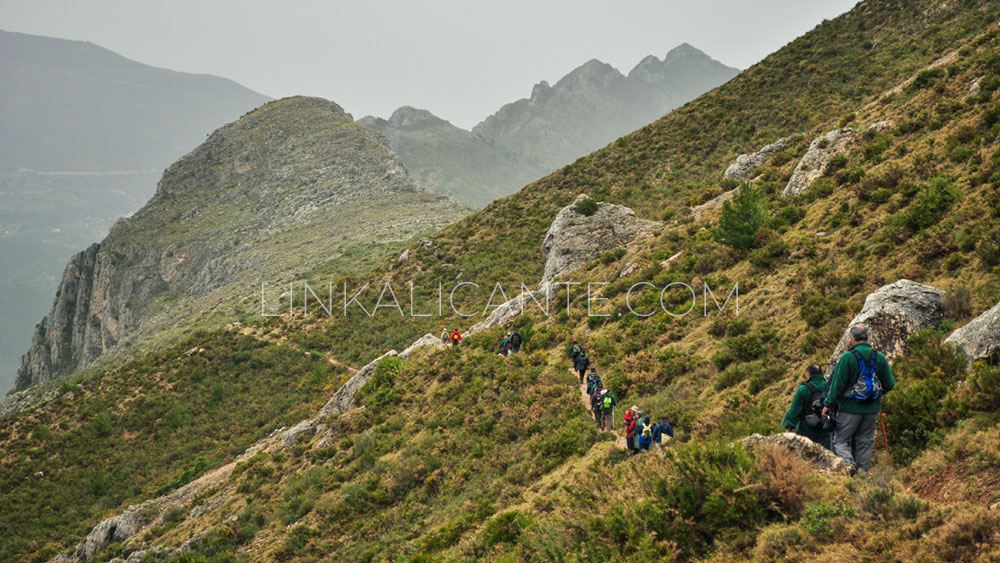
After the spectacular stretch of the Coll de Xaló trail, we reach a forest track at the foot of the peak. The last section, between terraces, leads us to Cases de Bèrnia , the starting and ending point of the excursion.
And here we conclude the wonderful circular route around the Serra de Bèrnia . Thank Caminantes de Aigües for the possibility of accompanying them on this excursion, a classic in the province of Alicante. Until next time!
Article originally published in LinkAlicante on March 24, 2010. Last updated: January 2023.
Do not miss...
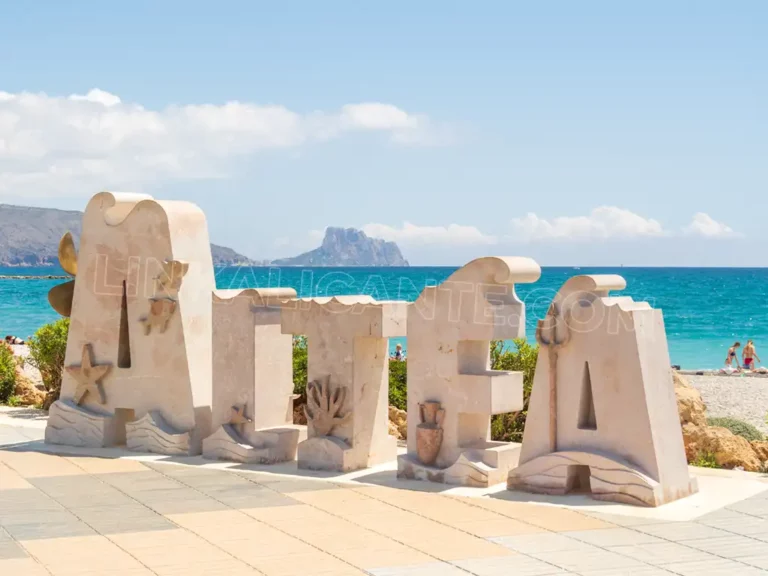
What to see in ALTEA, must-see places and plans
Discover the essential things to see in Altea: old town, viewpoints, charming streets… And in the surroundings: beaches, routes, gastronomy and more.
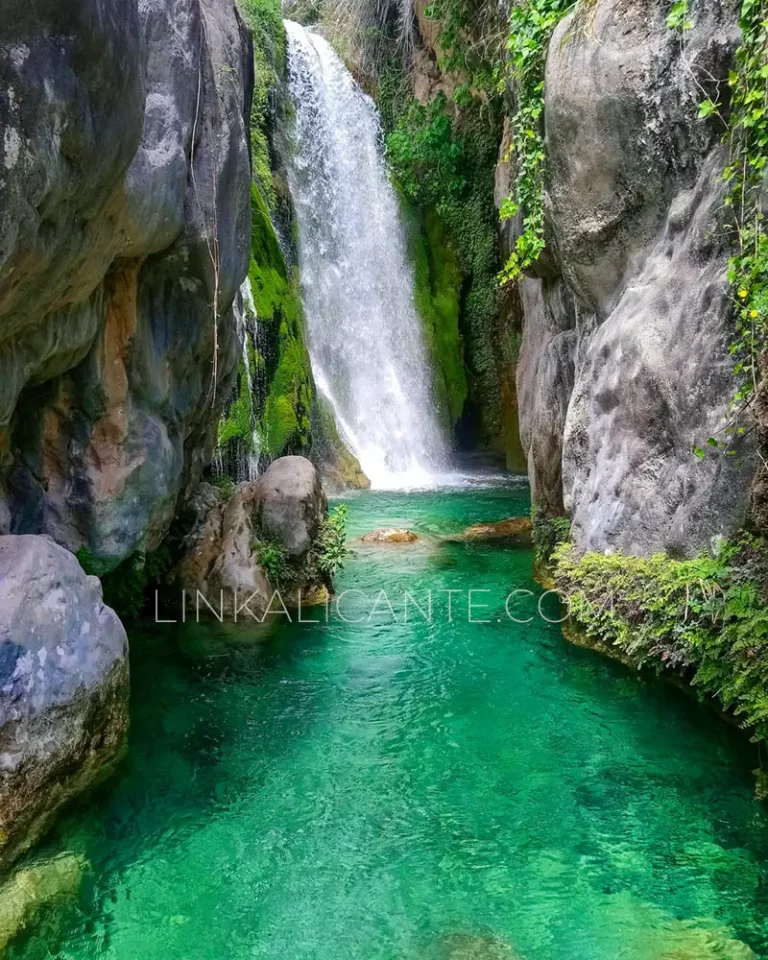
Algar Waterfalls, the natural swimming pools of Callosa d’En Sarrià
Les Fonts d’Algar (Las Fuentes del Algar) is a river spot of great beauty where you can swim in natural pools of crystalline waters.

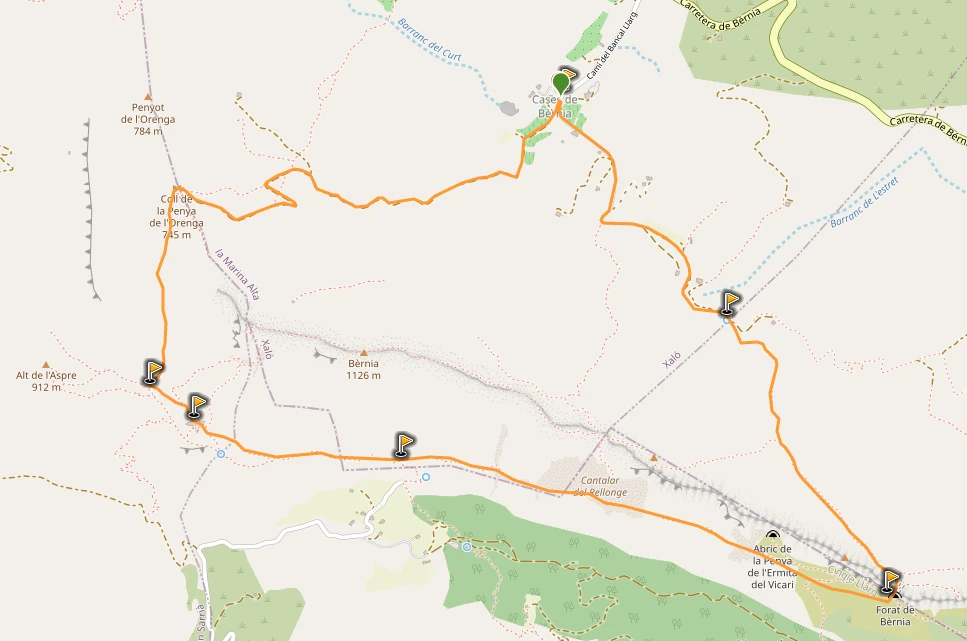
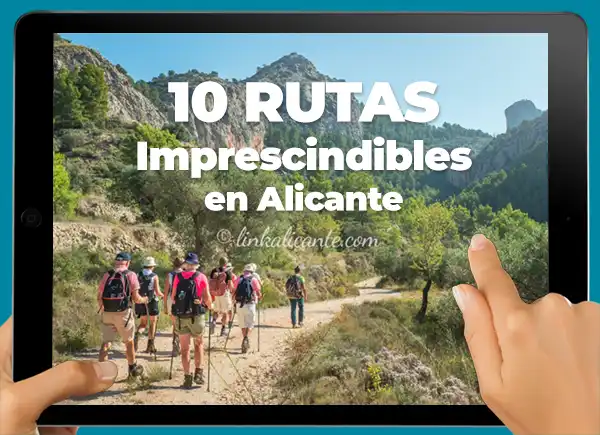
Pingback: Ausflugsziele – Javea und Umgebung
Pingback: Our Essential Vacation Tips – Casa Herradura